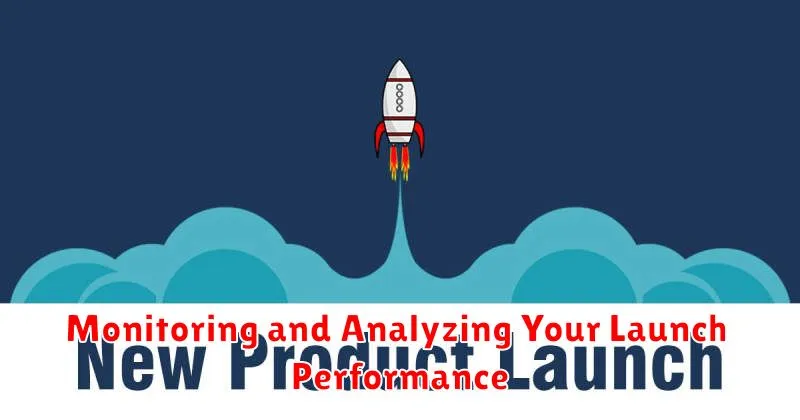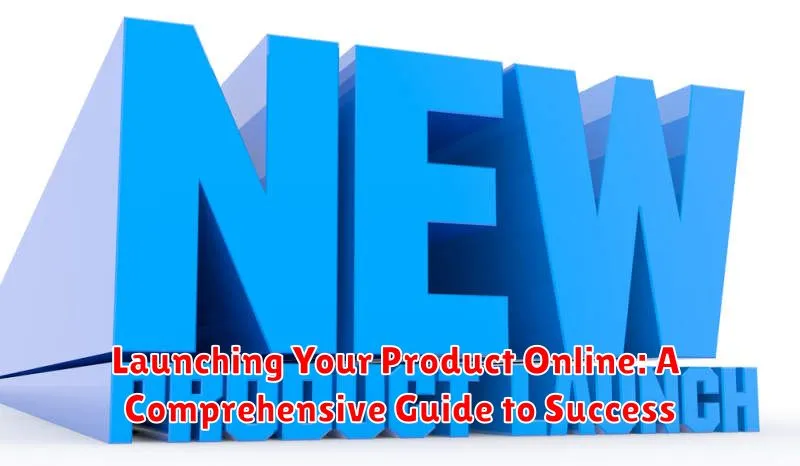Launching a new product online can feel like navigating a complex maze. From market research and product development to marketing strategy and customer acquisition, the steps to a successful product launch are numerous and interconnected. This comprehensive guide will illuminate the path, providing a structured approach to launching your product online and ensuring you achieve maximum impact and sustainable growth. Whether you’re launching a physical product, software, or service, the principles outlined here will be invaluable for achieving your business goals.
This guide will cover essential topics, including defining your target audience, crafting a compelling value proposition, building a robust online presence, leveraging effective marketing channels, and optimizing your sales funnel for conversions. We’ll delve into pre-launch preparations, launch day strategies, and post-launch analysis, providing actionable steps for each phase of your product launch journey. By mastering these elements, you’ll be well-equipped to successfully launch your product online and navigate the dynamic landscape of the digital marketplace.
Defining Your Target Audience and Market Research
Before launching your product, it’s crucial to identify your target audience. Understanding their needs, preferences, and online behavior will inform every aspect of your launch strategy.
Start by defining your ideal customer. Consider demographics like age, gender, location, income, and education level. Also, explore psychographics, which delve into their values, interests, and lifestyle.
Market research plays a vital role in validating your assumptions and gathering valuable data. Utilize online surveys, competitor analysis, and social media listening to gain insights into market trends and customer behavior.
Creating buyer personas can be extremely helpful. These are semi-fictional representations of your ideal customers, based on research and data. They provide a tangible focus for your marketing efforts.
By thoroughly defining your target audience and conducting market research, you can tailor your product messaging, marketing campaigns, and overall strategy for maximum impact.
Crafting a Compelling Product Story and Messaging
A compelling product story differentiates your product from competitors and resonates with customers on an emotional level. It’s not just about features; it’s about the why behind your product. What problem does it solve? What value does it offer? Your story should be authentic and relatable, connecting with your target audience’s needs and aspirations.
Key elements of a compelling product story include:
- Origin: How did the idea for your product come about?
- Purpose: What problem are you solving?
- Process: What makes your product unique?
- People: Who is behind the product, and what are their values?
Once you have your story, craft concise and persuasive messaging that reinforces it. Highlight the key benefits and unique selling propositions of your product. Use clear and concise language, focusing on the value your product delivers to the customer. Consistent messaging across all platforms is crucial for building a strong brand identity.
Building a Pre-Launch Buzz and Generating Excitement
Generating pre-launch buzz is crucial for a successful product launch. It builds anticipation and primes your target audience for purchase. A well-executed pre-launch campaign can significantly impact your initial sales and overall product performance.
Leverage social media to create a sense of community and excitement. Run contests, offer sneak peeks, and engage with potential customers. Influencer marketing can also be a powerful tool. Partnering with relevant influencers can expose your product to a wider audience and build credibility.
Early bird discounts and exclusive offers can incentivize early adoption and reward your initial customer base. Consider creating a waiting list to capture leads and gauge interest. This allows you to communicate directly with potential customers and build anticipation for the launch.
Public relations and media outreach can generate valuable exposure. Reach out to journalists and bloggers who cover your industry. A press release announcing your launch can create significant media attention and increase brand visibility.
Choosing the Right E-Commerce Platform and Setting Up Your Store
Selecting the appropriate e-commerce platform is crucial for your online success. Consider factors like your budget, technical skills, and the size and complexity of your product catalog.
Popular platforms offer varying features and pricing structures. Some cater to beginners with user-friendly interfaces and drag-and-drop functionality, while others provide advanced customization options for experienced developers.
Key features to evaluate include inventory management, payment gateway integration, shipping options, and marketing tools. Research different platforms and compare their offerings to find the best fit for your business needs.
Once you’ve chosen a platform, setting up your store involves several steps. These typically include choosing a domain name, designing your store’s layout, uploading product listings, and configuring payment and shipping options.
Thorough testing is essential before launching. Ensure all functionalities work correctly, from adding items to the cart to completing the checkout process. A smooth and user-friendly experience is vital for converting visitors into customers.
Creating High-Quality Product Listings and Descriptions

Compelling product listings are crucial for converting browsers into buyers. High-quality visuals are paramount. Use professional, well-lit photos showcasing your product from various angles. Consider including lifestyle images to demonstrate its use and appeal.
Product descriptions should be concise yet informative. Clearly highlight key features and benefits. Focus on the value your product offers to the customer. Use strong action verbs and persuasive language. Avoid jargon or technical terms that your target audience might not understand.
Keywords are essential for search engine optimization (SEO). Research relevant keywords that potential customers might use when searching for products like yours. Incorporate these keywords naturally within your product titles and descriptions.
Organize information logically using bullet points or short paragraphs for easy readability. A clear and structured presentation makes it easier for customers to find the information they need quickly.
Developing a Marketing and Promotion Strategy
A well-defined marketing and promotion strategy is crucial for a successful online product launch. This involves understanding your target audience and crafting a message that resonates with their needs and desires.
Key elements of this strategy include identifying your target audience, defining your unique selling proposition (USP), and selecting the right marketing channels. Consider social media marketing, email marketing, influencer collaborations, and paid advertising.
Develop a content calendar to schedule and organize your marketing efforts. This ensures consistent messaging and maximizes reach. Track your marketing campaign’s performance using relevant metrics to measure its effectiveness and make necessary adjustments.
Prior to launch, generate pre-launch buzz. Engage your audience with teasers, behind-the-scenes content, and early bird discounts to build anticipation and excitement.
Pricing Your Product Competitively
Setting the right price is crucial for a successful product launch. A price that’s too high can deter customers, while a price that’s too low can undervalue your product and impact profitability.
Consider these key factors when determining your product’s price:
- Cost of Goods Sold (COGS): This includes all the costs associated with producing your product.
- Market Research: Analyze competitor pricing and understand customer willingness to pay.
- Profit Margin: Determine your desired profit margin to ensure profitability.
- Value Proposition: Clearly communicate the value your product offers to justify the price.
Pricing strategies you can explore include:
- Cost-plus pricing: Adding a markup to your COGS.
- Value-based pricing: Setting the price based on perceived customer value.
- Competitive pricing: Matching or slightly undercutting competitor prices.
- Premium pricing: Setting a higher price to reflect exclusivity or superior quality.
Managing Inventory and Fulfillment
Efficient inventory management and fulfillment are crucial for a successful online product launch. Mismanagement can lead to stockouts, delayed shipments, and ultimately, dissatisfied customers.
Firstly, accurately forecast your initial inventory needs. Consider pre-launch demand, marketing efforts, and production lead times. Having a safety stock buffer can mitigate unexpected spikes in orders.
Next, choose a fulfillment method that aligns with your business model and resources. Options include in-house fulfillment, dropshipping, or partnering with a third-party logistics provider (3PL). Each option has its own set of advantages and disadvantages in terms of cost, control, and scalability.
Establish a clear inventory tracking system. This allows you to monitor stock levels, anticipate reorder points, and minimize storage costs. Real-time visibility into your inventory is essential for informed decision-making.
Finally, ensure your chosen fulfillment method can handle the expected order volume. Streamline your packing and shipping processes to ensure timely delivery and a positive customer experience. Regularly audit your fulfillment process to identify areas for improvement.
Providing Excellent Customer Service and Support
Customer service is paramount to the success of any online product launch. A positive customer experience fosters loyalty and encourages positive word-of-mouth marketing.
Establish clear communication channels. Offer support through various avenues such as email, phone, and live chat. Ensure these channels are staffed by knowledgeable and responsive representatives.
Develop a comprehensive FAQ section. Addressing common questions proactively can significantly reduce support inquiries and empower customers to find solutions independently.
Implement a robust return and refund policy. A clear and customer-friendly policy builds trust and reduces purchase anxiety. Make the process as streamlined as possible.
Actively solicit feedback. Encourage customers to share their experiences and use this valuable information to continually improve your product and customer service offerings.
Monitoring and Analyzing Your Launch Performance

Post-launch analysis is crucial for understanding the effectiveness of your product launch strategy. Key Performance Indicators (KPIs) provide valuable insights into what worked, what didn’t, and areas for improvement.
Track website traffic, conversion rates, and sales data to gauge initial customer response. Monitor social media engagement and mentions to assess public perception and brand awareness. Analyze customer feedback, including reviews and support interactions, to identify potential product or service issues.
Regularly review your chosen KPIs. Compare actual results against projected targets. This data-driven approach enables informed decisions about future marketing campaigns, product development, and overall business strategy.

